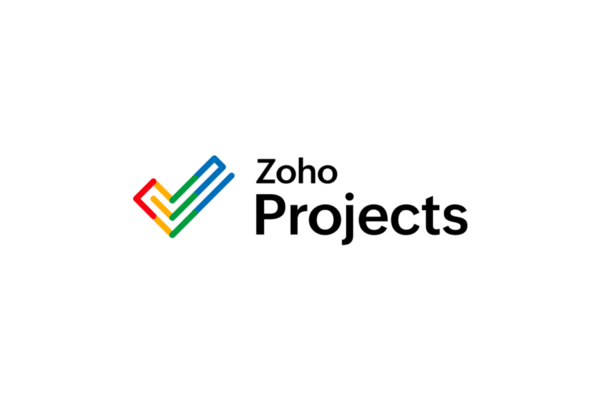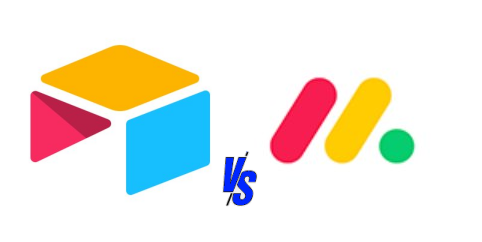KEY TAKEAWAYS
What is Microsoft Project?
Microsoft Project is a project management software solution developed by Microsoft to effectively manage dependencies and costs, among other project elements. It offers a range of powerful features that help streamline and organize project tasks, timelines, and resources.
Project is particularly useful for project managers who are already familiar with Microsoft Excel, or are with organizations that are already using Microsoft programs in their operations. Initially available only as a desktop app, the tool now has Project for the web, which is built on the Microsoft Power Platform, and the web-based Project Online, as Microsoft rolls out major changes to help teams adapt to remote work.
Microsoft Project Pros and Cons
Microsoft Project offers its seamless integration with the wider Microsoft ecosystem, allowing for easy collaboration and data sharing with other Microsoft tools. However, it currently has three different apps, which may require users to switch back and forth between them.
Here’s a summary of the pros and cons of using Microsoft Project.
Pros
Cons
Pros of Using Microsoft Project
Excel-like interface
One of the best attributes of the Microsoft Project software is its familiar interface that closely resembles that of Microsoft Excel. It has tools for listing down tasks, grouping them into phases, indicating estimates, and connecting dependencies. The software also automatically generates a Gantt chart for easier visualization and tracking of progress.
The Project’s similarity to Excel allows PMs to easily learn how to use it and utilize its features for efficient project management.
Flexible project planning
For project managers who are accustomed to an Excel-like layout, the project planning functionalities of the MS Project desktop app would be easy to pick up. It offers increased flexibility, allowing the user to customize and tailor their project plans to their specific needs.
Whether it’s creating a Gantt chart schedule or tracking resource costs and assignments, MS Project has multiple views that cater to all aspects of the project. The Resource charts help in efficiently allocating resources, while the Cost sheets provide a comprehensive overview of the overall project cost.
For Agile projects, Project for the web has a board view that allows teams to easily move tasks across sprints, and to or from the project backlogs.
Effective team collaboration tools
In addition to the Microsoft Project desktop app, users also have the option to publish projects on either the Project Online application or Project for the web. Doing so gives you access to a plethora of features that enhance team collaboration.
There’s the board view that lets you organize tasks and track progress visually. The risk management feature that helps you identify and mitigate potential risks. The approvals feature streamlines the process of getting project milestones approved, saving you time and effort. It also offers impressive collaborative capabilities that allow you to share data with team members seamlessly, collaborate in real time, and keep everyone aligned.
Extensive reporting capabilities
Project for the web offers a range of useful features that help streamline project reporting, such as the option to create charts that consolidate data, making it easy to present project progress and key metrics to stakeholders. These charts provide a visual representation of the project’s status, allowing for quick and effective communication with team members and decision-makers.
But the benefits don’t stop there. By integrating Microsoft Project desktop app and Microsoft Project for the web with Power BI, you can take reporting to a whole new level. Power BI is a powerful data visualization tool that allows you to create interactive and dynamic reports. By combining the data from both the desktop app and the web version, you can generate even more detailed reports that provide valuable insights to stakeholders.
Enhanced security
Microsoft has a comprehensive compliance program to ensure that the applications within the Microsoft 365 ecosystem, including Microsoft Project, undergo stringent security testing. This means that not only is your data protected, but the specific application you are using is also constantly being audited and reviewed in accordance with security and compliance frameworks.
With yearly penetration testing and reviews of data-handling, privacy, and security attributes, Microsoft goes above and beyond to keep your data safe from any potential breaches or cybercrime attacks.
Cons of Using Microsoft Project
Switching between microsoft project applications
Microsoft Project currently has three apps that are not yet in feature parity with each other. This means that project managers have to switch between the apps to fully maximize the potential of the suite.
Although Microsoft Project Online and Project for the web stand out when it comes to collaboration, they don’t have some of the functionality that the Microsoft Project desktop app has for managing the nitty-gritty details such as project costs. As of this writing, there are several Project for the web limitations, such as the maximum number of tasks for a project capped at 1000.
It can be frustrating to have to navigate between multiple apps, and there is speculation that Microsoft has plans to streamline this in the future. But until then, project managers will have to make do with what is available.
Extra steps for online syncing
One of the drawbacks of using the Microsoft Project desktop application is that if you want to collaborate on a work, you’ll need to manually move your project to Microsoft Project Online or Project for the web. This additional step can be a con for users who prefer a more seamless and automated process. However, once the project is published, it becomes accessible to other team members, allowing for easier collaboration and real-time updates.
Few integrations outside microsoft
Microsoft Project is designed to integrate smoothly with the applications within the Microsoft 365 ecosystem. While integrations with applications outside Microsoft are possible and there is also the option to purchase it as a standalone plan, when it comes to collaboration, using Microsoft Project in conjunction with other Microsoft applications is still the most highly recommended approach.
5 Key Features of MS Project
Multiple views for holistic project management
When managing complex projects, it is essential to have project management tools that offer multiple views to gain a holistic understanding of the project. With Microsoft Project, project managers can easily switch between different views, such as the classic Gantt chart or a resource sheet, to systematically set the crucial parts of their projects.
Microsoft Teams integration
By integrating MS Project for the web into Microsoft Teams, you can take advantage of the project management features of Microsoft Project and the collaborative environment of Microsoft Teams.
With Microsoft Teams, you’ll get a dedicated channel for team communication, where you can have conversations, share updates, and discuss project activities. You will also have the added benefit of team chat and @mentions to keep your project members engaged and informed, and you can leave comments on tasks and documents. Finally, there’s the calendar feature that allows you and your team to keep track of important deadlines and milestones.
Microsoft 365 integration
Project for the web utilizes the power of the Microsoft 365 infrastructure for access and collaboration. With just a few clicks, you can add a group (team) to your MS Project files and this will automatically give the members access. This will not only simplify the process of sharing files, but it also ensures that everyone can view all the relevant data in the ecosystem.
Moreover, by sharing your project to a Microsoft 365 Group, you unlock a plethora of additional features like a Sharepoint document library, OneNote for notes, a shared mailbox, and group calendar. This enables team members to collaborate effectively, exchange information, and stay organized throughout the project’s lifecycle.
Extensive reporting capabilities with Power BI
Microsoft Project Online and Project for the web integrate with Power BI. This integration lets project managers establish data connections between the project app and Power BI, unlocking a world of possibilities for data reporting. Need to make adjustments? No problem! You can easily edit these templates to ensure that your reports and visuals accurately reflect the progress and milestones of your projects.
Power BI provides access to powerful templates like Portfolio Timeline and Portfolio Milestones, but you can also customize them to fit your needs.
Online (cloud), web, or on-premise
Microsoft Project offers both cloud and on-premises solutions. Cloud is the relatively cheaper option, but on-premise offers more security for organizations who are not remote. There have been updates on MS Project features, and this continued evolution is due to the changing work environments, especially with the rise of remote work and organizations.
However, if security is a top priority for your organization and remote work is not a requirement, the on-premises solution makes a good option as it offers enhanced security measures. You can have peace of mind knowing that your data is stored securely within your organization’s premises.
Pricing Plans of Microsoft Project
Cloud-Based Solutions
As of March 15, 2024
| Project Plan 1 | Project Plan 2 | Project Plan 3 | |
|---|---|---|---|
| Price (exclusive of tax) | $10.00 user/mo | $30.00 user/mo | $55.00 user/mo |
| Apps included | Project for the web, Project Online Essentials | Project for the web, Project Online, Project Online desktop client | Project for the web, Project Online, Project Online desktop client |
| Project Home | ✅ | ✅ | ✅ |
| Views:Grid viewBoard viewTimeline (Gantt) view | ✅ | ✅ | ✅ |
| Collaboration and communication | ✅ | ✅ | ✅ |
| Coauthoring | ✅ | ✅ | ✅ |
| Project planning and scheduling | ✅ | ✅ | ✅ |
| Reporting | ✅ | ✅ | ✅ |
| Timesheet submission | ✅ | ✅ | ✅ |
| Resource management | – | ✅ | ✅ |
| Desktop client | – | ✅ | ✅ |
| Portfolio selection and optimization | – | – | ✅ |
| Demand management | – | – | ✅ |
| Enterprise resource planning and management | – | – | ✅ |
On-Premise Solutions
As of March 15, 2024
| Project Standard 2021 | Project Professional 2021 | Project Server | |
|---|---|---|---|
| Price (exclusive of tax) | $679.99 one-time | $1129.99 one-time | |
| Fully installed and up-to-date desktop app | ✅ | ✅ | ✅ |
| Manage project schedule and costs | ✅ | ✅ | ✅ |
| Manage tasks, reports, and business intelligence | ✅ | ✅ | ✅ |
| Manage resources | ✅ | ✅ | |
| Sync with Project Online and Project Server | ✅ | ||
| Submit timesheets to capture project and nonproject time spent | ✅ | ||
| Manage demand | ✅ | ||
| Advanced analytics | ✅ |
Who Should Use MS Project
Project managers who find themselves juggling multiple complex projects will greatly benefit from utilizing Microsoft Project. Additionally, employing the whole Microsoft ecosystem, not just Project, for the business operations, creates a robust infrastructure that is especially useful for organizations with remote teams. By consolidating all company operations into one secure and reliable place, project managers can streamline their workflows and improve overall efficiency.
When to Choose an Alternative
The best project management tool will always be the one that aligns with the project team’s needs. There are several project management tool alternatives you can consider if you want to explore options outside MS Project, but here are the three we would recommend, depending on the team’s concerns.
Price constraints
Alternative: ClickUp
While Microsoft Project is a powerful project management tool, its cost can be a significant barrier for many teams. The software requires a substantial investment, especially for small businesses or startups with limited budgets. Additionally, Microsoft Project may not be the best fit for teams that are not willing to abandon their current workflow and tools in favor of migrating everything to Microsoft products. An alternative solution that can help mitigate these issues is ClickUp.
How It Stacks Up
- Multiple Views: Similar to Microsoft Projects, ClickUp offers multiple views that allow users to choose the most suitable format for their project planning. Whether it is a table, a list, a Kanban board, or a Gantt chart, ClickUp has all the options available. This flexibility ensures that users can customize their project planning according to their preferences and requirements.
- Wide range of integrations: While Microsoft Project primarily integrates with other Microsoft products, ClickUp stands out for its ability to integrate with a diverse set of tools from different providers. It offers ClickUp integrations with popular tools such as Slack, Github, Hubspot, Google Drive, Dropbox, OneDrive, and more. This allows users to seamlessly connect ClickUp with their existing tools and workflows, making it easier to collaborate and streamline their project management processes.
- Multi-platform: ClickUp can be accessed on various platforms, including the web, desktop, Mac, and mobile devices. This ensures that users can access their tasks and projects from any device, providing them with the flexibility to work from anywhere. Moreover, ClickUp takes security seriously by offering two-factor authentication, which adds an extra layer of protection to user accounts.
- Free plan available: ClickUp offers a free forever plan that includes unlimited tasks, kanban boards, whiteboards, and other features.
For proofing features
Alternative: Wrike
For teams that use proofing as part of their process, Wrike is a good tool to explore as MS Project doesn’t have a native proofing functionality. With Wrike, you can keep your creative process in-house and have all the tools you need to review assets in context. Add real-time commentary, track side-by-side versions, and edit using your favorite tools like Adobe CC. You can also automate approvals, ensuring accelerated production and a smoother workflow.
Intuitive interface
Alternative: monday.com
If you’re looking for a project management tool that offers both customization and ease of use, then monday.com is a good alternative to consider. With its highly customizable interface, you can tailor the platform to suit your needs and preferences. monday.com also provides a wide range of templates designed for different industries, making it easier to get started on your projects.
While Microsoft Project integrates seamlessly with Microsoft apps, monday.com offers a more diverse selection of integrations, including popular development tools like Grit and Jira.
FAQs
Our Verdict
Microsoft Project is a robust tool that houses a wide range of features, which makes it an ideal choice for professional project managers. Its extensive capabilities are particularly beneficial for managing complex projects. Moreover, when used in conjunction with other Microsoft applications like Teams and Office 365, Microsoft Project becomes even more powerful. This integration allows for seamless collaboration and enhances overall project management efficiency.
Organizations that have already invested in the Microsoft ecosystem will find Microsoft Project to be a perfect fit for their operations. However, if a standalone project management app is required, it may be worth exploring alternative options unless the in-depth features provided by Microsoft Project are essential.





